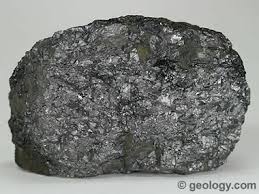Facts About Titanium

Titanium is a light metal and the ninth most common element in the crust of the Earth. Titanium possesses properties that give it great strength. It is primarily used as an alloy, combined with other metals to form various compounds. It is lighter than steel and much stronger than aluminum. Ti is utilized in a variety of metal manufacturing products such as ship propellers, automobile frames and surgical instruments. Ti has properties that make it very useful, among them being the most hypoallergenic element on Earth.
Features
Titanium is represented by the symbol Ti on the Periodic Table of Elements. It is black, silver or gray and cannot be seen through. It is a shiny metal that never occurs by itself in nature, rather it is always combined with other elements. It will fracture easily when it becomes cold and is only slightly magnetic. Ti has an atomic number of 22, meaning that the nucleus of a titanium atom contains 22 protons. It has a boiling point of over 3,000 degrees Fahrenheit.
Effects
Because of its corrosion-resistant nature, Ti is often used in the metal manufacturing of such items as propeller shafts, diver’s knives, parts for water desalinization plants, ship rigging and the moving parts of a ship constantly exposed to sea water. It is able to stand up to the effects of acids, salt solutions and chlorine gases. Ti is not soluble in water.
Benefits
Ti can be combined with other elements to form many useful substances. It is used to produce white pigment in paint and varnishes, plastics, fabrics and paper among other things. Since it is lighter than steel but has more strength, it has been used often in the aerospace industry, making engines and components for satellites, spacecrafts and airplanes. Titanium produces few allergic reactions in people and is used to make such medical supplies as joint replacements and surgical pins, and is important in the jewelry world. Armor plated military vehicles are constructed with the use of Ti and it is even used in some fireworks to make them give off silvery sparks.
History
An English clergyman named William Gregor is credited with first recognizing titanium but it was not for a few years later that a German chemist by the name of M. H. Klaproth was able to separate it from some of the minerals it was bonded to. Klaproth gave titanium its name, after the feared Greek giants of mythology. Pure Ti was not produced until 1910, when American M. A. Hunter did so. Titanium alloys were not popular until the 1940s, when it was combined with such elements as iron, aluminum, manganese and molybdenum.
Geography
Ilmenite and rutile are the most prominent sources of titanium, with more than 90 percent of it coming from Ilmenite–over a billion tons each year. It is normally mined from sands that contain these minerals, with Florida and Virginia producing titanium in the United States. Titanium is also imported from abroad, with most of it coming from Russia, Japan and Kazakhstan. There are large deposits of titanium minerals in such nations as Canada, Australia, Norway, India and South Africa.
Ti = Titanium